The Ancestral Path Exhibition ‘Pameran Jalan Nenek Moyang’ is an effort to find the connection between the manifestations of art, culture and history between Malaysia and Japan. This cultural journey depends a lot on one primordial object: the boat and the exhibition reflect the artist's persistent efforts to find a point to color the world of local fine art, the ongoing exhibition brings a very special theme of installation art as well as several other concepts including history, culture and also works contemporary art concept art.
The works on display cover several art trends using various media techniques such as installation art, mixed media, watercolor, oil paint and wood carving art. Artists from Japan are Nobuyuki Sugihara, Hiromu Sato, Ayaka Nakamura, Taeko Mori while from Malaysia are Samri Abd Rahman (Malaysia) and Tham Siew Moi (Malaysia).
A variety of interesting activities are provided throughout the exhibition, including Lecture Sessions related to aspects of the history and heritage of Orang Asli Masks on Carey Island. This lecture will give exposure to participants related to the art of carving statues of ancestors who are considered to be the guardians of the Mahmeri tribe. Lecture sessions will also be conducted by experienced indigenous sculptors who will be held during the exhibition.
Nobuyuki Sugihara conducted one year of research indigenous cultures in Malaysia, Indonesia, and Singapore as an Agency for Cultural Affairs Overseas Study Program for upcoming artists. His research focuses in Bali, Flores, Sabu, Sumba, Timor, Sulawesi, Kalimantan, Bintan, Batam, Mantan, Dendong, Singkep, Penuba, Sumatra, Nias, Java, and Papua in Indonesia. In Malaysia, he conducted research on the Orang Asli in Selangor, Perak, Johor and the indigenous people of Sabah and Sarawak.
The Mah Meri people, who live on Carey Island in Selangor, have their roots in nomadic seafaring and make wooden masks. And he stayed to create artworks at the Samri's house in Mah Meri village for 3 weeks. In the past, the Mah Meri shamans used to build a boat and send them out to sea for a healing ceremony and Mah Mari threw the masks they used in their festivals into the river. That reminds me of my connection to boat culture.
During his one-year of research, he felt that the indigenous people are always connected to their ancestors and pray to them. The sea paths crossed by the ancestors of Japanese are included to Indonesia and Malaysia. Nobuyuki Sugihara then encountered images of boats like the many roots of islands. Nobuyuki Sugihara represented it as an installation of a ship of shells. Ayaka Nakamura (Craft/Japan), a hat maker who is accompanying Sugihara, created an installation of nipah palm leaf textiles inspired by Orang Asli textiles. And she created an earthenware made with Malaysian clay.
The exhibition includes masks by Orang Asli woodcarver Samri (Malaysia), the collection of Mah Meri masks of the Museum of Asian Art, paintings by Mai Tham (Malaysia), who helped with the Orang Asli research, Taeko Mori(Japan) who does installations using paper and Hiromu Sato(Japan) who creates masks. They are invited from Japan by Nobuyuki Sugihara who is director of the Shinano Primitive Sense Art Festival held every summer in Nagano Prefecture, Japan.
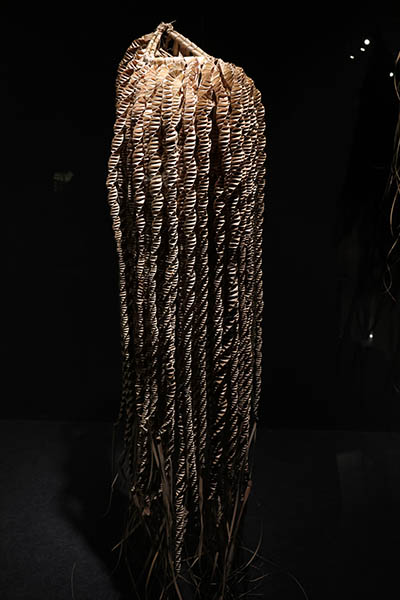
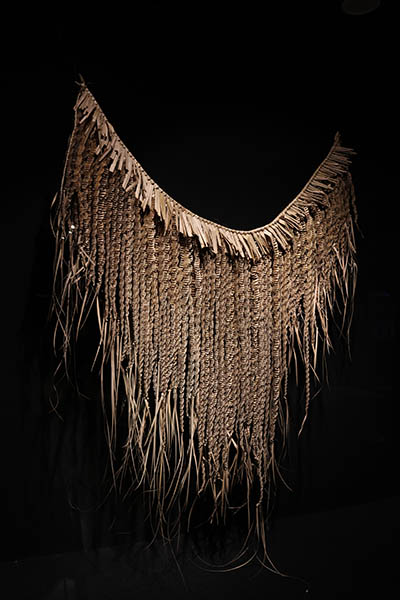

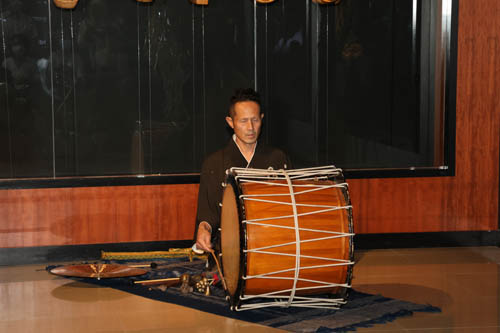
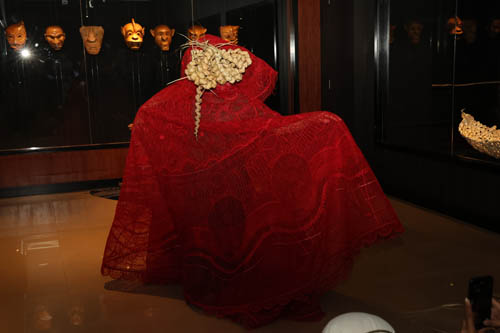
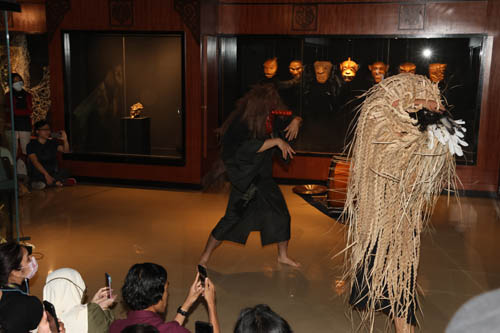
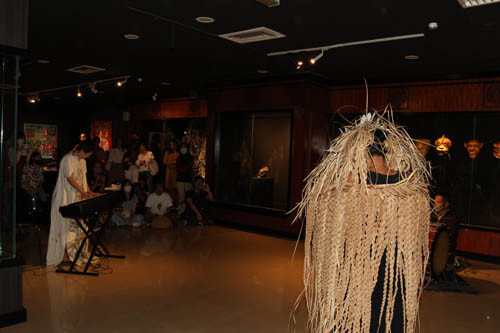
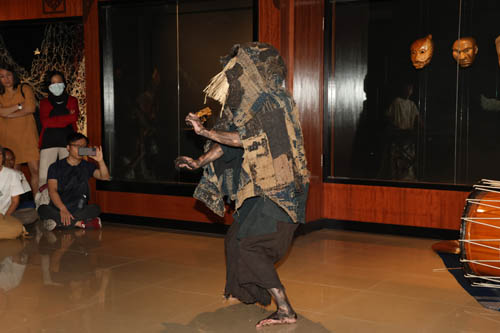
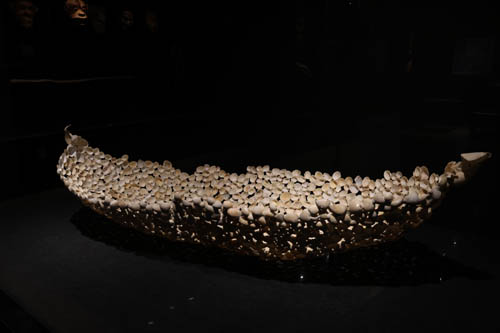
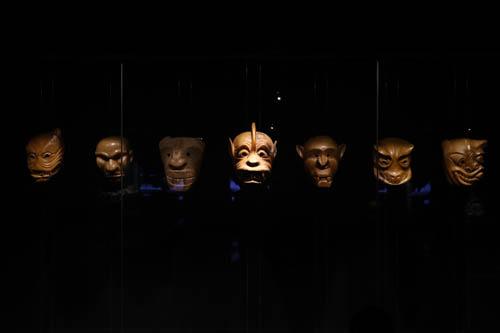
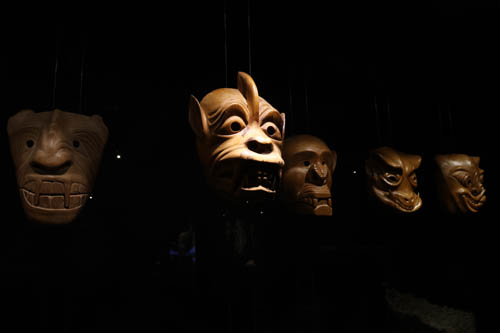

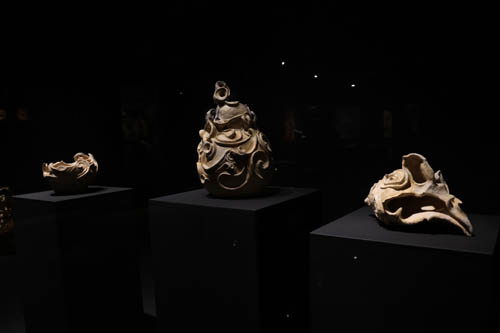
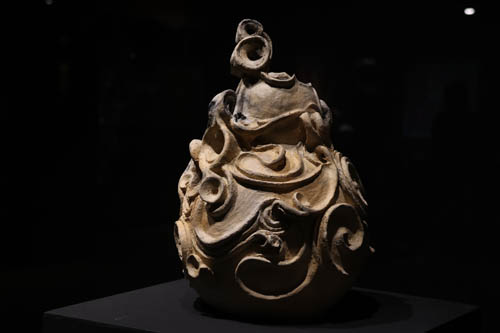
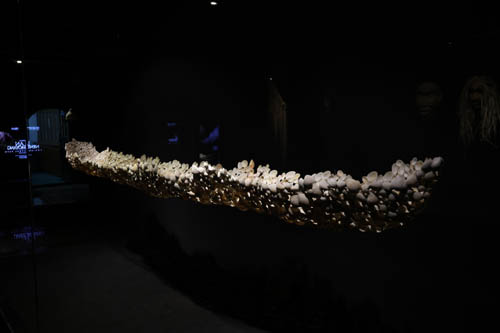
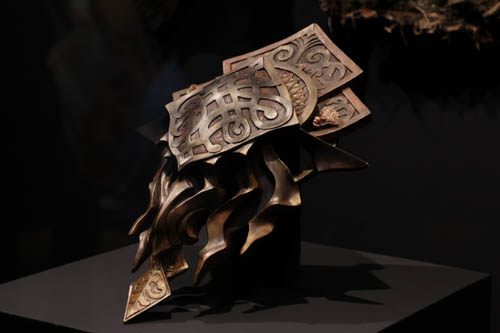

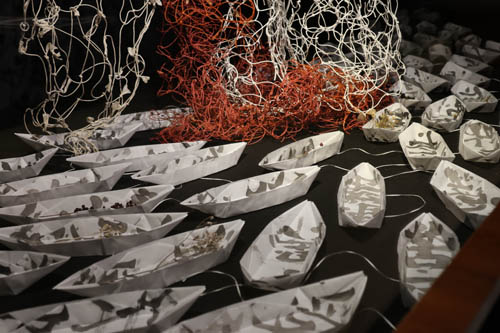
Last Update: 28/02/2023